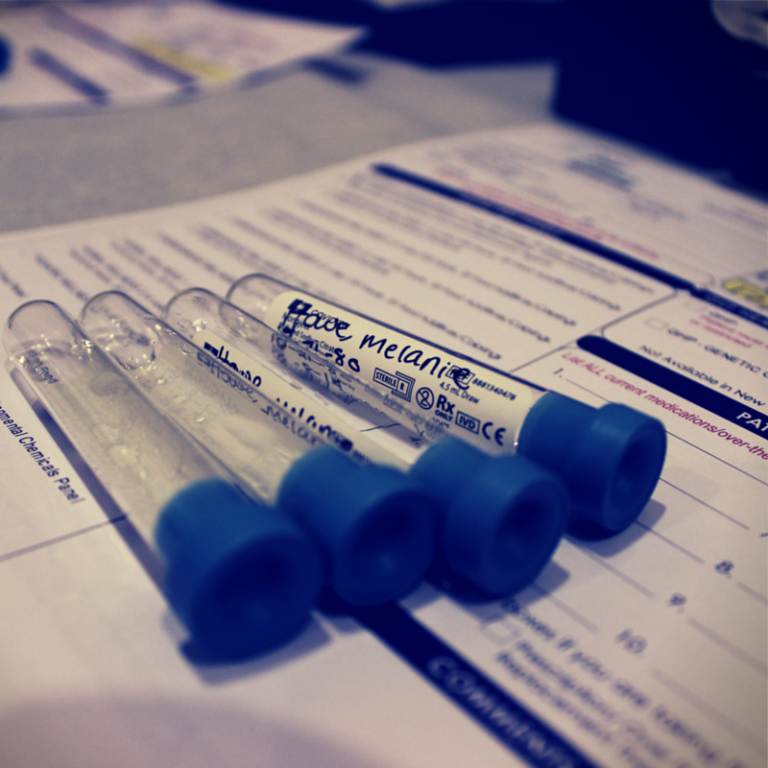How to Read Blood Test Results: 5 Common Test Results Decoded
Identifying which blood test you need is tricky enough… and now you have results that seem to be written in a code meant only for doctors and wizards to decipher. That’s why we’ve created this guide help you read the results of the five most commonly recommended blood tests.
Blood Chemistry
Why you need it: Measures chemicals in the blood that provide information on kidney and cardiovascular health, and aids in the detection of early-stage metabolic syndrome, diabetes, and coronary-artery disease.
How to read it: This blood test looks at glucose, cholesterol, HDL (high-density lipoprotein, aka “good” cholesterol), LDL (low-density lipoprotein, aka “bad” cholesterol), and triglycerides. Each chemical has an optimal range:
- Glucose (70-85 mg/dL); High levels may indicate diabetes, while low levels indicate hypoglycemia. This is often seen in diabetics and can usually be treated with glucose tablets and monitoring blood glucose levels.
- Cholesterol (180-200 mg/dL); Surprisingly, this count is not helpful for determining your risk of heart disease unless it’s over 330. The counts below are more indicative.
- LDL (under 100 mg/dL); High levels are linked to coronary artery disease, heart attack, and stroke, while low levels are linked to depression, anxiety, and cancer.
- HDL (over 55 mg/dL); Studies have shown that higher levels of HDL may increase risk for recurrent coronary events like chest pain and heart attack. Low levels may increase risk of developing heart disease.
- Triglycerides (under 100 mg/dL); High levels may contribute to hardening and thickening of artery walls, leading to increased risk of stroke, heart attack, and heart disease. Low levels may indicate hyperthyroidism or malabsorption syndrome.

Complete Blood Count
Why you need it: Detects blood diseases and disorders like anemia, infections, clotting problems, blood cancers, and immune system disorders. Measures things like the number, variety, percentage, concentration, and quality of red blood cells, white blood cells, and platelets.
How to read it:Each component has an optimal range, some differing by gender:
- Red Blood Cells (M: 4.7-6.1 million cells/mcL, F: 4.2-5.4 million cells/mcL); Low red blood cell counts could indicate anemia and cancer, while high red blood cell counts could signal use of anabolic steroids, dehydration, and carbon monoxide poisoning.
- White Blood Cells (M: 4,500-10,000 cells/mcL); White Low white blood cell counts could indicate viral infections or bone marrow issues, while high white blood cell counts could mean leukemia.
- Platelets (140,000-400,000/mm3); High platelet counts indicate thrombocytosis, which could be caused by many things including allergies, infections, and cancer. Low platelet counts indicate thrombocytopenia, which could be caused by decreased production of platelets due to problems like leukemia or increased breakdown of platelets due to things like pregnancy, bacteria, or medications.
Hemoglobin A1C
Why you need it: Measures your blood sugar control over the last two to three months and is an independent predictor of heart disease risk in a person with or without diabetes.
How to read it: The optimal rating for Hemoglobin A1C is less than 4.5%. Numbers above this level indicate poor blood sugar control and thus, an increased risk of diabetes.
Thyroid Stimulating Hormone
Why you need it: This hormone controls thyroid hormone secretion in the thyroid. The American Thyroid Association recommends screening for TSH levels at the age of 35 and every five years thereafter.
How to read it: The optimal range is .35-2.1 mU/L. Anything above this may indicate hyperthyroid disease (increased thyroid activity), which is characterized by reduced bone mineral density, fatigue, weight loss, heat intolerance, nervousness, insomnia, muscle weakness, shortness of breath, and heart palpitations. Alternatively, low levels could indicate hypothyroid disease (low thyroid activity), which is characterized by fatigue, depression, sensitivity to cold temperatures, constipation, dry skin, and weight gain.
Hormone Panel
Why you need it: Dehydroepiandrosterone (DHEA), a hormone produced by the adrenal glands, is a precursor to the sex hormones estrogen and testosterone. Blood levels of DHEA peak during your 20s and decline dramatically with age. Healthy levels of DHEA may support immune function, bone density, mood, libido, and healthy body composition.
How to read it: The optimal range for DHEA in men is 400-500 μg/dL and is 350-430 μg/dL in women. High and low levels indicate hormone secretion issues and may indicate tumors.
There you have it—translated results to your blood tests. Of course, we’re happy to decode, but we don’t diagnose. So, if you have any questions or concerns about your results or recurring symptoms, please consult a physician.